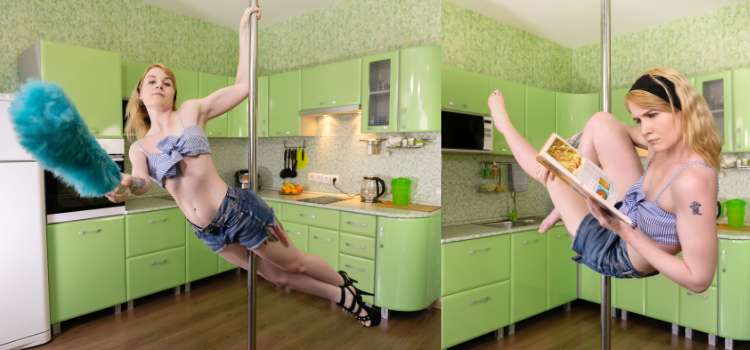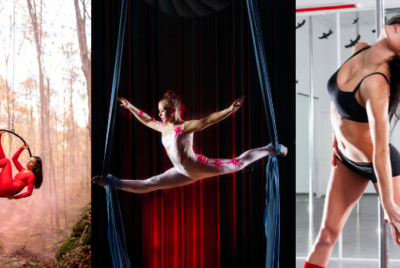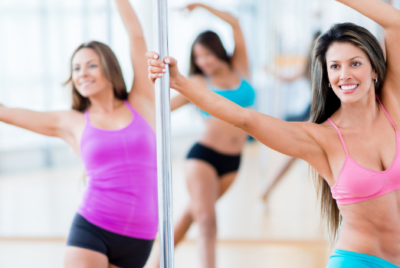Dance Pole for Home: Enhancing Your Pole Dancing Journey
Introduction
As an enthusiast and advisor in the pole dancing niche, I am thrilled to share my insights on the topic of “dance pole for home.” In recent years, pole dancing has gained immense popularity as a unique and empowering form of exercise, self-expression, and artistry. Many individuals, like myself, have discovered the joy and numerous benefits of practicing pole dancing at home. In this article, I will provide helpful suggestions and reasons for having a dance pole at home, ensuring a safe and fulfilling pole dancing experience.
Pole dancing is no longer limited to professional studios or performances. It has become increasingly accessible to enthusiasts of all levels, with many individuals embracing it as a way to stay fit, build strength, boost confidence, and unleash their creative expression. Having a dance pole at home can be a game-changer for anyone passionate about pole dancing.
The first and foremost benefit of having a dance pole at home is the convenience it offers. No more limitations due to studio schedules or membership fees. With a pole at home, you have the freedom to practice whenever you want, without worrying about time constraints or commuting to a distant location. Additionally, having a pole in the comfort of your own home allows you to let go of inhibitions and fully immerse yourself in the art of pole dancing.
Choosing the Right Dance Pole
Before diving into the world of home pole dancing, it’s crucial to choose the right dance pole that suits your needs and space. There are different types of dance poles available in the market, such as static poles, spinning poles, and removable poles. Each type has its advantages and considerations.
When selecting a dance pole, consider factors like ceiling height, floor type, and weight capacity. Measure the ceiling height accurately to ensure the pole can be safely installed without any height restrictions. For floors, hardwood or concrete surfaces are ideal, as they provide stability during pole manoeuvres. It’s also essential to check the weight capacity of the pole to ensure it can support your body weight securely.
Safety Precautions
Safety should always be a top priority when engaging in any physical activity, and pole dancing is no exception. To ensure a safe pole dancing experience at home, it’s important to follow some safety precautions:
Warm-up and Stretching: Begin each pole dancing session with a proper warm-up routine to prepare your body for the physical demands of the activity. Engage in stretching exercises to improve flexibility and prevent muscle strains.
Check the Pole: Before every practice session, inspect the pole for any signs of wear or damage. Ensure that all screws and fittings are secure. If you notice any issues, address them promptly or consider replacing the pole.
Proper Grip and Hand Care: Maintaining a secure grip on the pole is crucial for stability and preventing accidents. Clean your hands before each session to remove any oils or lotions that may affect your grip. Consider using grip aids like chalk or grip-enhancing products to improve your hold.
Progress Gradually: Pole dancing is a skill that requires time and practice to develop. Start with basic moves and gradually progress to more advanced routines as your strength and technique improve. Don’t push yourself too hard or attempt moves beyond your current skill level, as it can increase the risk of injuries.
Protective Padding: Consider using crash mats or protective padding around the pole to minimise the impact in case of falls or slips. This is especially important for beginners who are still learning balance and control.
Stay Hydrated: Pole dancing can be physically demanding, so remember to stay hydrated throughout your practice sessions. Have a water bottle nearby and take regular breaks to rehydrate.
Listen to Your Body: Pay attention to any discomfort or pain during pole dancing. If you experience persistent pain or injury, seek medical attention and take the necessary time to heal before resuming your practice.
Setting Up your Dance Pole for Home
Once you have chosen the right dance pole and ensured safety precautions, it’s time to set up the pole in your home. Here’s a step-by-step guide to help you install the dance pole securely:
Select the Location: Choose a suitable location in your home that has enough space for pole dancing. Ensure there is ample clearance around the pole to perform moves without obstructions.
Measure and Mark: Measure the ceiling height accurately and mark the desired position for the pole. Use a stud finder to locate ceiling joists or structural support beams to ensure a secure installation.
Assemble the Pole: Follow the manufacturer’s instructions to assemble the dance pole correctly. Make sure all components are securely attached.
Install the Pole: Place the pole against the marked spot on the ceiling and extend it to fit the height. Apply pressure to secure it in place, ensuring a snug and stable fit. Some poles may require twisting or locking mechanisms for additional stability.
Test and Adjust: Give the pole a firm shake and test its stability before use. If you notice any wobbling or instability, adjust the pole according to the manufacturer’s instructions or seek professional assistance.
Floor Protection: Consider using a protective mat or floor covering around the base of the pole to prevent damage to the flooring and provide additional stability.
By following these steps, you can set up a dance pole securely in your home and embark on your pole dancing journey with confidence.
Beginner’s Guide to Pole Dancing
If you’re new to pole dancing, getting started can feel overwhelming. However, with the right approach and guidance, you can progress and develop your skills. Here are some essential tips for beginners:
Start with Basic Moves: Begin your pole dancing journey by learning basic moves such as spins, holds, and transitions. These foundational moves will help you build strength, improve coordination, and develop body awareness.
Take Advantage of Instructional Resources: There are numerous online tutorials, video classes, and instructional DVDs available for learning pole dancing at home. Look for beginner-friendly resources that provide clear demonstrations, step-by-step instructions, and safety tips.
Focus on Technique: Pay attention to proper technique and form right from the beginning. Good technique not only enhances your performance but also minimises the risk of injuries. Take it slow, break down the moves, and practice correct body alignment and muscle engagement.
Consistency is Key: Like any skill, pole dancing requires regular practice to improve. Dedicate consistent time to your pole dancing sessions, even if it’s just a few minutes a day. Consistency will help you build strength, flexibility, and muscle memory.
Seek Community Support: Join online pole dancing communities or local classes to connect with fellow enthusiasts. Engaging with others who share your passion can provide inspiration, motivation, and valuable tips for your pole dancing journey.
Remember, everyone starts somewhere, and progress takes time. Embrace the process, celebrate small achievements, and enjoy the journey of self-discovery through pole dancing.
Progression and Advancement
As you gain confidence and proficiency in pole dancing, you can progress to more advanced moves and routines. Here are some tips for advancing in your pole dancing journey:
Build Strength and Flexibility: Focus on strength training exercises that target your core, upper body, and lower body. This will improve your overall strength and stability on the pole. Additionally, incorporate flexibility exercises and stretches to increase your range of motion.
Learn Inversions and Climbs: Inversions, such as the basic invert or shoulder mount, are exciting pole moves that require strength, control, and proper technique. Mastering inversions opens up a whole new world of pole dancing possibilities. Climbing the pole is another fundamental skill that allows you to transition between moves and adds dynamic elements to your routines.
Explore Different Styles: Pole dancing encompasses a wide range of styles, including sensual, lyrical, acrobatic, and contemporary. Experiment with different styles to find what resonates with you and challenge yourself to explore new movements and combinations.
Take Workshops and Classes: Attend workshops or advanced pole dancing classes, either in person or online, to learn from experienced instructors. These specialised sessions can provide valuable insights, advanced techniques, and creative inspiration to take your pole dancing to the next level.
Set Goals and Track Progress: Set achievable goals for yourself and track your progress. Celebrate milestones along the way, whether it’s nailing a challenging move or performing a routine with confidence. Regularly reviewing your progress will keep you motivated and inspired.
Remember, advancing in pole dancing is a personal journey. Don’t compare yourself to others or get discouraged by temporary setbacks. With perseverance, dedication, and a growth mindset, you can continue to push your boundaries and achieve remarkable progress.
Routine Practice and Conditioning
Consistent practice and conditioning are key to improving your pole dancing skills. Here are some tips to establish a routine and optimise your practice sessions:
Schedule Practice Time: Dedicate specific time slots in your weekly schedule for pole dancing practice. Treat it as a non-negotiable appointment with yourself and commit to showing up regularly.
Warm-up and Cool Down: Prioritise warming up your body before each practice session. Engage in light cardio exercises, followed by dynamic stretches to prepare your muscles. After your session, cool down with static stretches to promote flexibility and prevent muscle soreness.
Focus on Specific Goals: Set practice goals for each session. Whether it’s perfecting a particular move, working on strength-building exercises, or practicing a routine, having a clear focus will make your practice sessions more productive.
Practice Progression: Break down complex moves or routines into smaller components and practice them individually. Master each element before integrating them into a full sequence. This approach will enhance your muscle memory and overall execution.
Conditioning Exercises: In addition to pole-specific practice, incorporate conditioning exercises to strengthen the muscles necessary for pole dancing. Include exercises that target your core, arms, back, and legs. Push-ups, planks, squats, and pull-ups are effective exercises to include in your conditioning routine.
Record and Review: Use video recordings to document your practice sessions. Reviewing your performances allows you to analyse your technique, identify areas for improvement, and track your progress over time. It’s also a great way to celebrate your achievements and share your journey with others.
Establishing a consistent practice routine will not only enhance your pole dancing skills but also boost your overall fitness and confidence. Embrace the process, stay patient, and enjoy the satisfaction of seeing your hard work pay off.
Creating a Dance Space
Designing a dedicated dance space at home can enhance your pole dancing experience. Here are some suggestions for optimising your dance space for safety and comfort:
Choose the Right Room: Select a room or area in your home that provides enough space for movement and accommodates the height and width requirements of your dance pole. Consider a room with a non-slippery floor and ample natural or artificial lighting.
Clear the Space: Remove any furniture, decorative items, or obstacles that could hinder your movements or pose a safety risk. Clearing the space will give you the freedom to execute moves and routines without any obstructions.
Install Mirrors: Mount mirrors on the walls surrounding your dance space to monitor your form, technique, and alignment. Mirrors also add a touch of elegance and create the illusion of a larger space.
Ensure Adequate Lighting: Proper lighting is crucial for safety and aesthetics. Ensure that your dance space is well-lit, allowing you to see yourself clearly and avoid any potential accidents. Natural light or bright, adjustable LED lights are ideal.
Consider Soundproofing: If you live in an apartment or have neighbours nearby, consider soundproofing your dance space to minimise noise disturbances. Adding acoustic panels, rugs, or curtains can help absorb sound and create a more private atmosphere.
Personalise Your Space: Add personal touches to your dance space to make it an inviting and inspiring environment. Hang motivational quotes, display photographs, or incorporate plants or artwork that resonate with your passion for pole dancing.
Creating a dedicated dance space will not only provide a safe and comfortable environment for your pole dancing practice but also reinforce your commitment and enthusiasm for the art form.
Accessories and Attire
To enhance your pole dancing experience, consider investing in the following accessories and choosing appropriate attire:
Grip Aids: Grip aids can improve your grip on the pole and prevent slipping. Popular grip aids include liquid chalk, dry hands, and grip-enhancing gloves. Experiment with different options to find the one that works best for you.
Knee Pads: Knee pads provide cushioning and protect your knees during floor work and kneeling moves. Opt for knee pads specifically designed for pole dancing, as they offer flexibility and freedom of movement.
Ankle Protectors: Ankle protectors, such as ankle braces or guards, can provide extra support and stability during challenging pole manoeuvres. They are particularly beneficial for individuals with previous ankle injuries or weak joints.
Appropriate Footwear: When it comes to footwear, choose pole dancing shoes or heels that provide ankle support, stability, and grip. Ensure that the shoes fit comfortably and allow for freedom of movement.
Comfortable Clothing: Select comfortable clothing that allows for a full range of motion. Sports bras, tank tops, shorts, leggings, or pole dancing-specific attire are popular choices. Avoid loose or baggy clothing that may get caught on the pole.
By incorporating these accessories and selecting suitable attire, you can enhance your performance, comfort, and overall pole dancing experience.
Conclusion
In conclusion, setting up a dance pole at home allows you to enjoy the benefits of pole dancing conveniently and in the comfort of your own space. By following safety precautions, investing in a high-quality dance pole, and creating an optimal practice environment, you can engage in pole dancing safely and effectively.
Remember to start with basic moves, progress gradually, and focus on technique. Consistent practice, conditioning exercises, and goal setting will help you advance in your pole dancing journey. Additionally, personalising your dance space and choosing the right accessories and attire can enhance your overall experience.
Embrace the joy of pole dancing, celebrate your progress, and always prioritise safety. Pole dancing is not only a physically challenging activity but also a form of self-expression, empowerment, and artistry. Enjoy the journey, have fun, and let the pole be your stage for creativity and personal growth.
FAQs (Frequently Asked Questions)
Q1: Is pole dancing suitable for beginners?
A1: Absolutely! Pole dancing is for people of all fitness levels and backgrounds. Beginners can start with basic moves and gradually progress at their own pace.
Q2: Can I lose weight through pole dancing?
A2: Yes, pole dancing is an excellent form of exercise that can help you burn calories, build strength, and tone your muscles. Combined with a balanced diet, it can contribute to weight loss.
Q3: Can I practice pole dancing without a dance pole at home?
A3: While having a dance pole is ideal, there are exercises and techniques you can practice without one. Core strengthening exercises, floorwork, and flexibility training can still be done without a pole.
Q4: How long does it take to become proficient in pole dancing?
A4: The time it takes to become proficient varies for each individual. It depends on factors such as practice frequency, natural ability, fitness level, and previous dance or fitness experience. Consistent practice and dedication will yield progress over time.
Q5: Can men do pole dancing?
A5: Absolutely! Pole dancing is not limited to any gender. Men can also engage in pole dancing and benefit from its physical and artistic aspects. In fact, there are male pole dancing competitions and performers who showcase incredible strength and creativity.
Remember, pole dancing is a journey of self-expression, fitness, and personal growth. Enjoy the process, celebrate your achievements, and stay committed to your practice.




